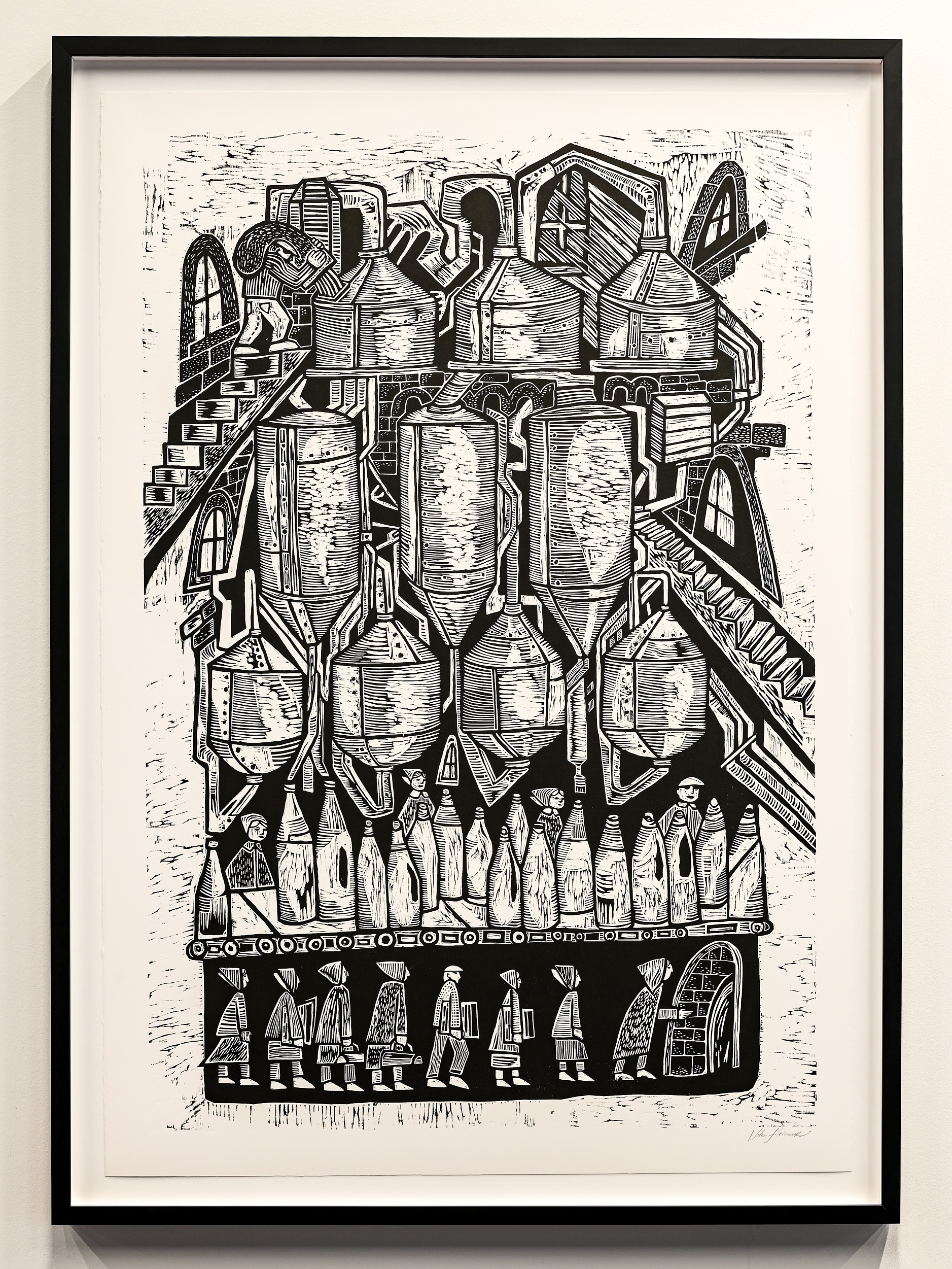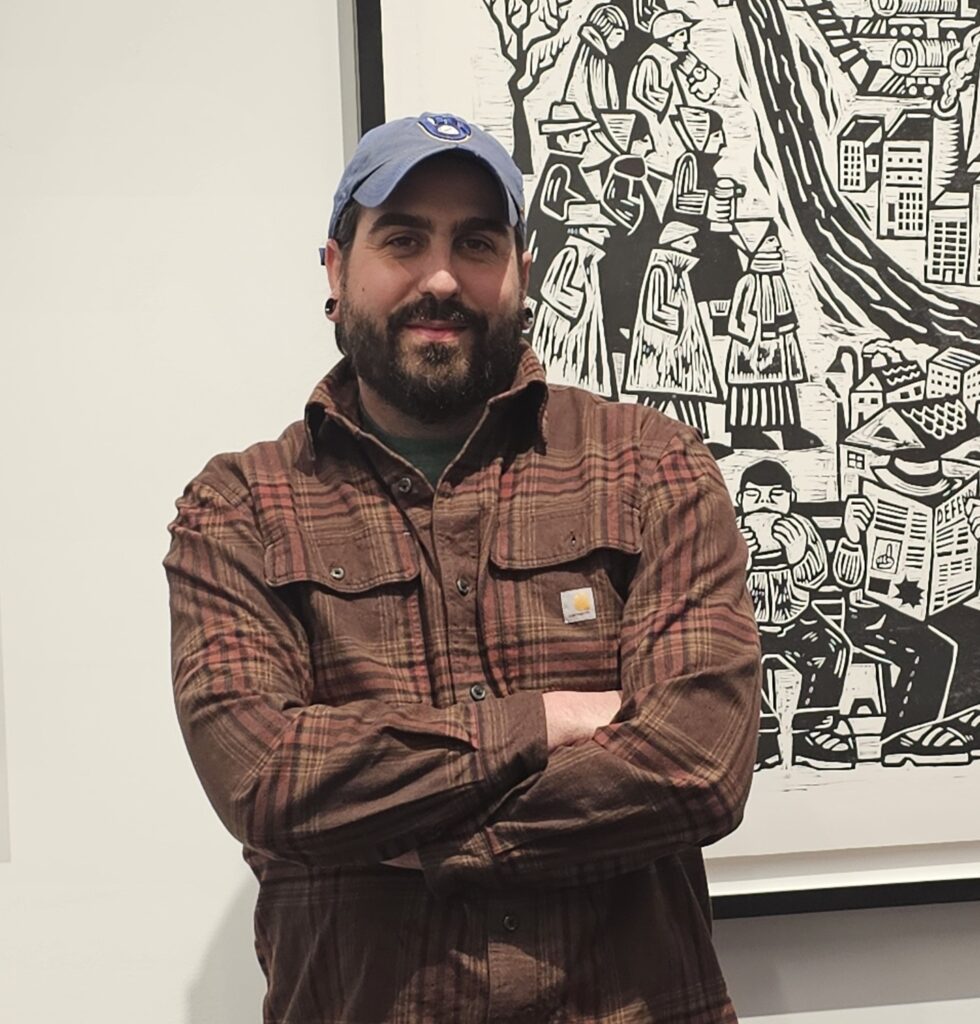John Fleissner
A Map of Working Class Milwaukee

This series of woodcuts, A Map of Working Class Milwaukee, depicts the life and history of Milwaukee’s working class and the industries they operated. The images demonstrate a broad historical narrative of people coming to Milwaukee from afar. In the prints, people walk to work to jobs in the auto industry, shipping, farm implement manufacturing, the railroads, brewing, and other heavy manufacturing. The images are sometimes specific to a time and place, others are a generalized representation of Milwaukee’s historical story.
The series resembles a map. The lake lies to the east on the right while the furthest inland is the Allis-Chalmers plant in West Allis.
The print, Lake Michigan shows vessels traveling from afar bringing newcomers who find work in the city’s manufacturing industries such as Bay View’s Rolling Mill represented in the bottom corner.
Harbor depicts the moored US Steel fleet, American Motor Corporation cars being loaded for transport aboard a ship, and workers arriving for their shift.
Further west is Brewery, an important industry in Milwaukee, where women worked in harsh conditions bottling beer.
The Menomonee River Valley shows the industrialized valley which has been home to manufacturing since Milwaukee’s early days with workplaces such as Miller Brewing Company, The Milwaukee Road, and Falk Corporation. People travel to work with lunch in hand from neighborhoods like Silver City to the south and Merrill Park to the north.
The Milwaukee Road shows an engine heading toward the train yard in a print to the left of the valley.
Finally, furthest inland Allis Chalmers depicts the massive plant where workers build the iconic tractors that were used around the world.
This series is dedicated to the generations of workers who built Milwaukee’s industries. Their lives and struggles have shaped our city and the course of history.







About John Fleissner
John Fleissner is an artist, organizer, and public school teacher based in Milwaukee, Wisconsin. He is best known as a printmaker, but also is a respected muralist. He primarily creates reliefs by carving linoleum and wood.
His art is dedicated to the working class. It is for the people who form picket lines, gather in union halls, work side-by-side in the classrooms, and for the people who make the city’s streets come alive.
According to Fleissner, his subject matter deals with the hopes, dreams, and aspirations of regular people.
“After college, where I studied art and printmaking, I got involved with the labor movement. As a result, my work has been inspired by those conversations with people about their lives and their struggles. It is my goal to encapsulate that reality in my work.”
Fleissner sees his art as a tool to express ideas, to communicate, and to bring life and energy to social movements.
“I use printmaking to proliferate my work. Print has a long tradition tied to movements for liberation precisely because of its ability to spread ideas through multiples.”
His relief cuts have a rough aesthetic thanks to their stark, bold, and powerful lines. This can often come across as melancholy upon initial glance, but upon closer inspection the observer can see the strength and perseverance of his subjects.
“Printmaking and painting murals on the street are something we do together. I fight for that day when we working people band together to take control of our lives and futures. The print shop and the murals on the street give life to these aspirations.”
Q&A with John Fleissner
